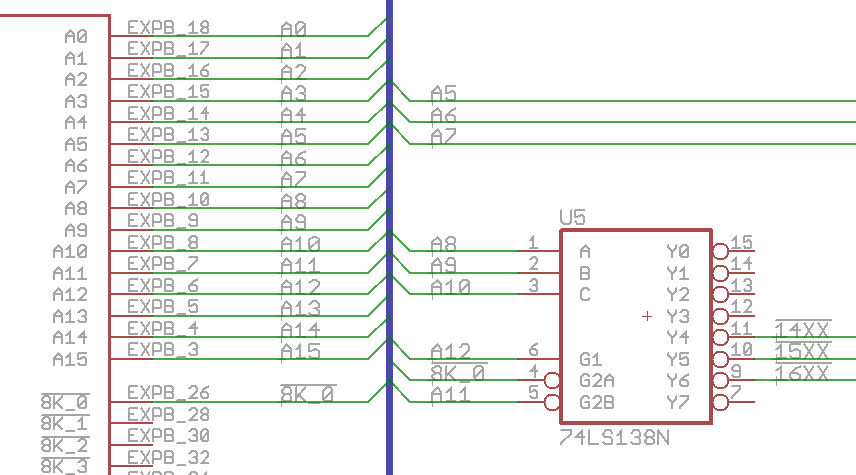By Bob Applegate
Adding I/O devices that don’t need much address space. On the KIM-1, the space from 1400-17FF is grouped into the K0 block but only 17xx are used, leaving 1400-16FF open for use. To decode that range into four blocks of 256 bytes is easy using a single chip and a few signals from the KIM Clone expansion bus:
Everyone has a 74LS138 in their parts collection, so just connect a few signals from the expansion bus and use one of the three signals from the 138 to decode which block you want to use. Use the A0-A7 address lines to decode into smaller pieces.
See also:
Proton PC-1
The Proton PC-1 is a 6502 based computer in a keyboard case. Produced by the Dutch electronics firm Post Electronics, la...
MTU and Eduardo Casino
Since 2023, after replicating a working KIM-1 Rev D PCB, Eduardo has been replicating and enhancing MTU products.
See...
MTU K-1000 power unit
K-1000 Basic KIM-1 power supply, completely enclosed, terminals trip output +5V @ 1.2A, +12V @.01A regulated, +7.5V @.75...
K-1013 floppy controller
Used in the early KIM-1 MTU bus system and in the MTU-130/140 systems.
16K RAM
Bootstrap ROM 256 bytes
Double ...

